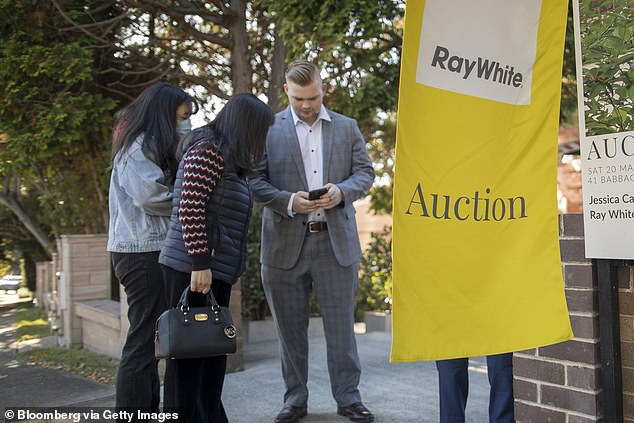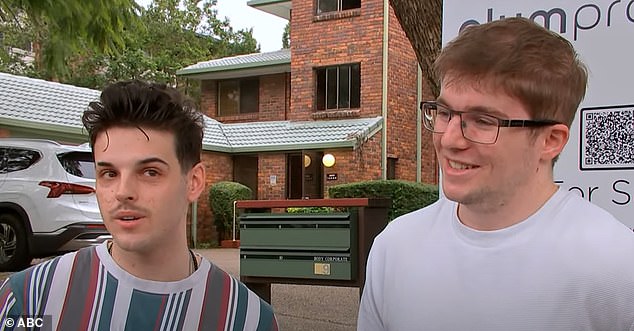Exorbitant housing costs have forced two friends to pool their savings just for the chance to buy a property.
The weekly house hunt by Oliver Pratt, 24, and Chris Bryant, 22, led them to a three-bedroom unit in Toowong, Brisbane, last weekend.
Despite being priced at around $1 million, the couple were among 80 people also inspecting the renovated apartment.
They said they could never afford a deposit individually and needed to join forces to submit competitive bids.
Pratt told ABC the hot property market meant they would have to apply for a mortgage loan in a “shared situation”.
A pair of young Australians, Oliver Pratt (left) and Chris Bryant (right), have been forced to pool their savings for the chance to buy a house, albeit with a split mortgage.
Their fight for a house comes as Brisbane has overtaken Canberra to become the second most expensive property market among Australia’s major cities.
The average cost of a home in Brisbane rose about 15.8 per cent last year to just over $843,000, according to CoreLogic data.
This puts Brisbane just above Canberra at $840,000, but behind the median price of all major cities ($864,000) and Sydney’s staggering $1.1 million.
CoreLogic research director Tim Lawless said lower levels of housing supply in Brisbane, Adelaide and Perth have sent prices soaring.
“Inventory levels in these markets remain well below average even though supplier activity has increased compared to this time last year,” Lawless said in a statement.
“New listings are being quickly absorbed by market demand, keeping stock levels low and putting upward pressure on prices.”
It noted that an increase in supply in Hobart had caused the average home price to fall 0.5 per cent in the past month, to $655,000.

The couple compete for a winning bid in Brisbane, which has become Australia’s second most expensive property market, behind only Sydney (file image)
It comes after property guru and auctioneer Tom Panos said young Australians have “no chance” of buying a home unless they are funded by their parents.
“When I go to an auction and see a person under 30, unless I see a mother and father near them, I think, ‘they don’t have a chance,'” he told 2GB’s Ben Fordham.
‘And it’s very sad to see that some of the people who buy real estate now under the age of 30 are people who are on Onlyfans.
“It’s gotten to the stage where, if you’re 18, getting a deposit on a unit will take you 20 years; for a house, it’s 40 years.”
Panos added that the average age of Australians applying for a home loan is now 32, up from 23 in 2009.
‘In my time, I remember that the dream was to reach 60-65 and have your house paid for. That was the average Australian’s dream,” Mr Panos said.
“Nowadays, the dream is, ‘I’ll have to reach that age to be able to make a deposit,’ so you can see why people are so discouraged and give up.”
Parents who help their children with deposits are also affecting their own retirement savings, Panos said.
‘I’m looking at people who are, say, between 60 and 65 years old. If they’re going to live to be 80 or 90, giving lump sum deposits of $100,000 to $200,000 changes the retirement trajectory for most people.’
Panos said rising house prices were forcing essential workers out of Australia’s big cities.
“I know teachers and nurses who can’t rent or buy a house,” she said.
‘There is no turning back when a society says that we can no longer help a teacher or a nurse, there is no turning back for society.
“It goes against the fabric of Australian society.”
He said the main driver of rising house prices was increased immigration.
“Immigration is very good, it helps the progress of a country, it is good for security,” said Mr. Panos.
‘However, I think (Australia should) hit the pause button and say, “Hey, if we only have 1,000 houses, why are we letting 1,500 people in?”
“So I think the simple solution is a pause or a reduction until we solve the housing problem or move towards it.”
Over the five years, 1.38 million net migrants are still expected to move to Australia, according to Treasury documents.


